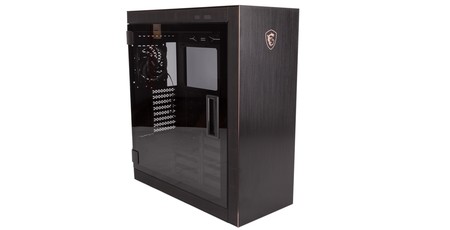
Performance Analysis
We’ve done some refining of our case testing procedure, which you can read about in the Test Setup section. There are no drastic changes, and old results are still useful for general points of comparison, but we figured this would be a good time to reset the graphs and retest the open test bench scenario to give us a baseline to work with. As it happens, the results for this barely changed once averaged out, but as we’re now doing average-of-three results, we wanted to restrict the data presented solely to the newer method, and this is what we’ll add to going forward.
Sadly, the MSI MPG Sekira 500G has fairly bad out-of-box cooling for both the CPU and GPU, delivering average delta T results that are 8°C and 5°C warmer than the open bench. In fact, the CPU delta T is one of the highest we’ve seen so far at 61°C, and the GPU at 55°C is definitely on the warm side too. We had some time to play with, so we set about removing panels to identify where the problem was.
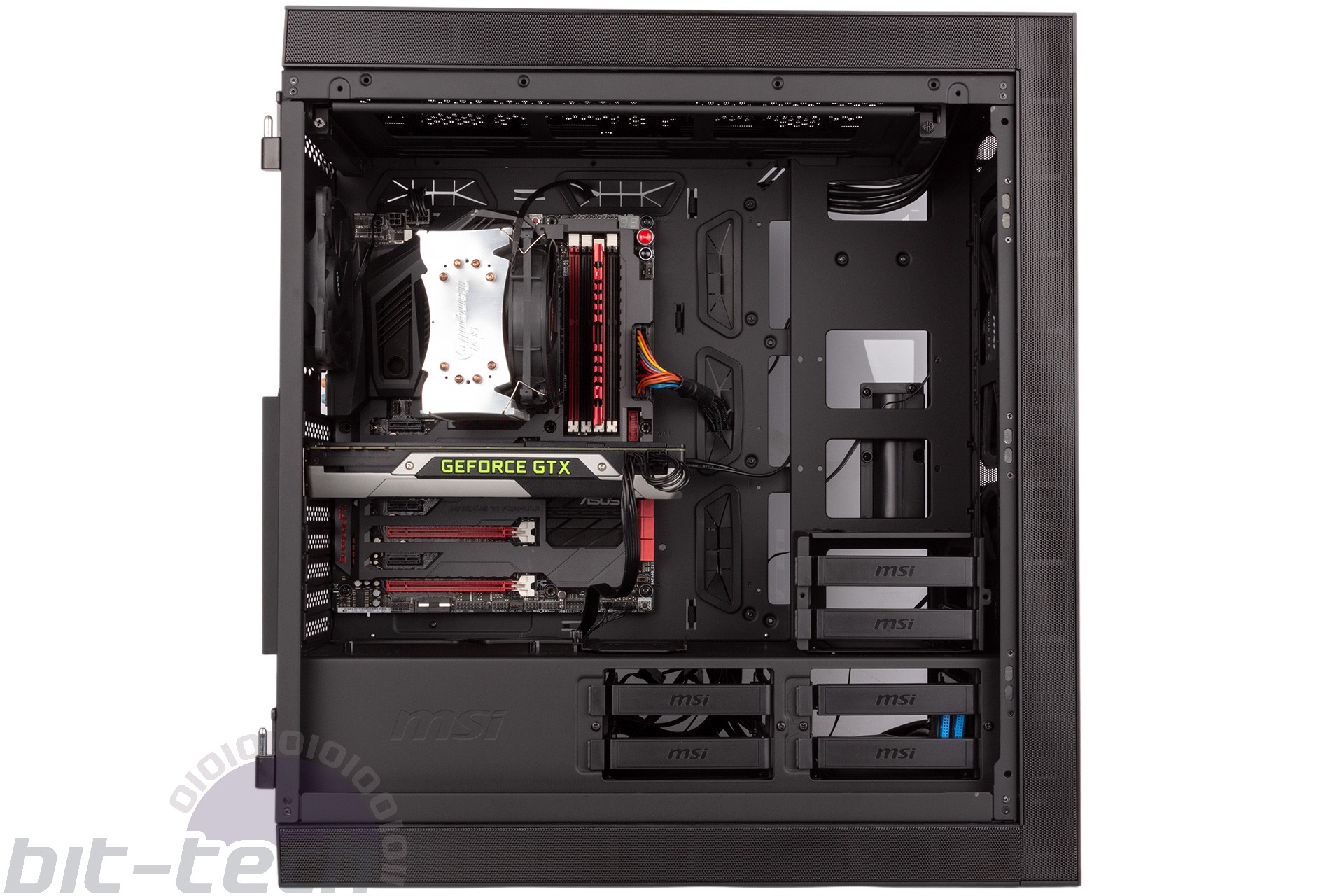
Usually, cases with exhaust fans don’t do this badly on CPU cooling, so the result here was especially surprising. Then again, MSI is only using a 120mm fan, and the roof definitely isn’t aiding natural ventilation. We therefore retested the case with the roof off, and immediately dropped the delta T result by 4°C, indicating that it is trapping heat in this area, an effect that could be exaggerated if you have a more powerful HEDT CPU. Fitting a roof exhaust fan should help to deal with this and give the case the extra boost it needs to force air out through those side-mounted vents, and naturally an all-in-one liquid-cooler would achieve this too.
However, it is quite obviously the front panel that is the biggest impediment to the cooling abilities of this case. That’s true of many cases, but here we have the numbers to demonstrate it. With the front panel removed, the two 200mm fans are completely unobstructed on the outside and suddenly are able to deliver a real gush of cool air, far more than probably any case we’ve tested in recent years – it’s really rare to get a pair of 200mm fans, after all, and they each shift plenty of air. The case layout ensures this is funnelled directly through to the CPU and GPU coolers, and we end up with a CPU delta T that is well below the open test bench result and a GPU delta T that also improves on it, albeit by a less significant amount.
We’re not suggesting anyone actually remove the front panel, but it goes to show just how much the it’s blocking airflow. The side vents that feed the front fans look large, but they’re actually positioned mostly behind the fans, and even the section in front of them is partially blocked by the internal plastic frame.
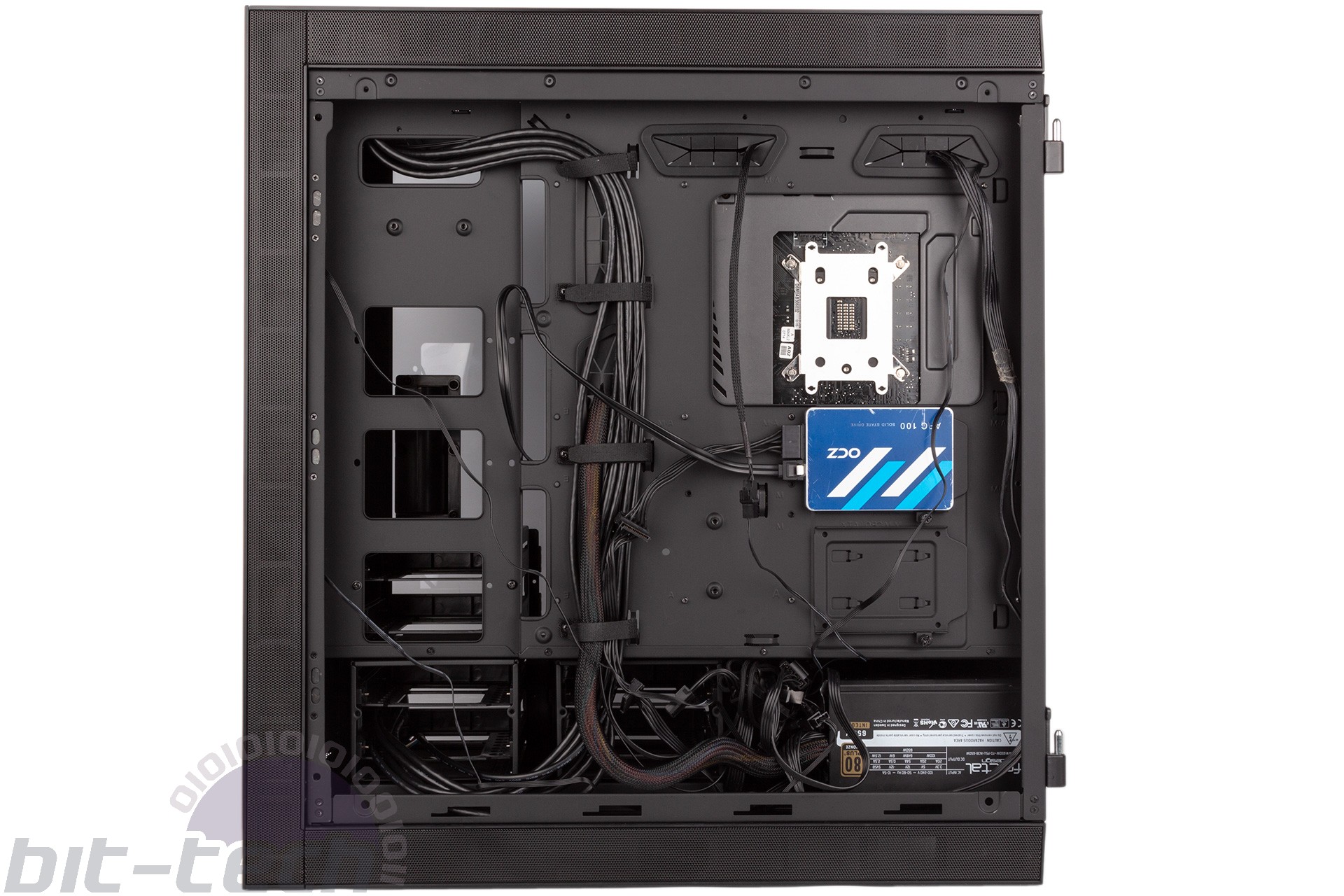
One benefit of having a highly insulated case is that noise has a tough time escaping as well, and we did notice that the MSI chassis is better at containing sound than many other more ventilated cases. However, whether this is worth the tradeoff in CPU and GPU thermals is up to you – we reckon MSI has gotten the balance wrong, especially when you consider that poor cooling most obviously presents itself as higher and louder fan speeds (as well as lower clock speeds) thanks to your components being placed under greater strain.
Conclusion
Impressed though we are with with the build quality the Sekira 500G offers up, elsewhere things are decidedly less impressive. It’s massive, yes, and this means it can support large components and plenty of storage, but MSI fails to utilise the size in any way that’s exciting. The rooftop radiator bracket is certainly nice, but the front is more limited when it comes to water-cooling than you might expect from a case this size in late 2019. A bit more modularity here would have allowed for larger radiators, for example, and this is becoming the norm in the more premium offerings MSI is attempting to compete with.
This points towards a larger pattern that has emerged with this case, namely good ideas undermined by not being fully realised. For example, the front I/O panel is very well connected and suitably modern, but leaving ‘LED’ printed on it when the case has no LED control button is a real ‘D’Oh!’ moment. Having a case with dual 200mm intakes is awesome, but they’re practically suffocated by the front panel design, and why not have a 140mm exhaust instead of 120mm? Or take the accessibility – the case is super easy to access thanks to well designed panels, but the magnets for the side panels are too weak and the clarity of the glass on the right is questionable. Cable routing and ease of use are generally very positive, but why not divide up the screws as a nice finishing touch? The presence of dust filters on the bottom is a good thing, but it'd be better to have a full-length filter accessible from the front.
Ultimately, we think the Sekira 500G is a chassis that needs a second revision. We think MSI is onto a winner when it comes to aesthetics and build quality, but at nearly £200 MSI is asking a lot from its customers. It’s only fair, then, that customers ask for a lot in return, and a closer examination reveals one or two too many shortcomings for us to recommend it outright, but if you’re desperate for a large case you can cram with drives, it may well fit the bill.

MSI MPG Velox 100R Chassis Review
October 14 2021 | 15:04


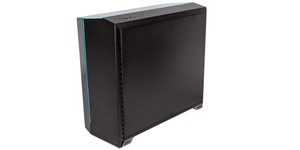
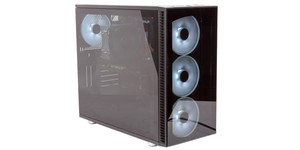





Want to comment? Please log in.